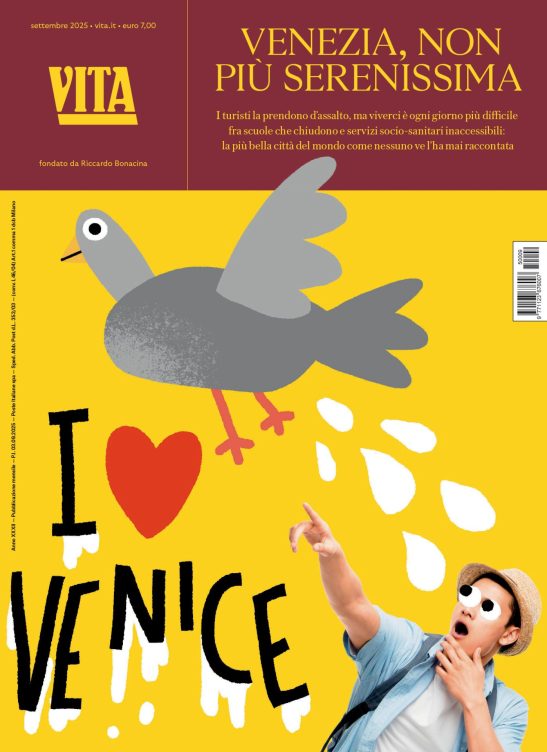Non profit
A new dimension in the fight against hunger
FAO - Food and Agriculture Organization of the United Nations
di Redazione

The world is once again on the verge of what could turn out to be another major food crisis. Global food prices increased for the eighth consecutive month in February, with prices of nearly all commodities on the rise. Extreme weather events (too little or too much rainfall) hit crops in major producing countries during 2010. More recently, political instability in some countries and the weakening dollar are pushing prices to higher levels. The turmoil in North Africa, which has driven up oil prices, can increase the cost of food production to even higher levels and negatively influence the import bills of countries relying on world markets for food and fuel.
The current high prices will push more people into hunger and malnutrition. The heavy economic burden caused by this situation will be borne by both developed and developing countries but not to the same extent. Consumers in the industrialized countries, faced with rising food prices, are generally protected by such leavenings of prosperity as the chances of increased wages or the machinery of social security. In the developing countries, where buying food supplies absorbs the largest share of the family’s budget, a rapid increase in costs means that more and more families will be unable to afford such supplies and, inevitably, will go hungry. The World Bank estimates that 44 million people have been forced into extreme poverty in the eight months preceeding February 2011.
The FAO 2010 report
One thing that developed and developing countries have in common is that by definition the institutional level that is closer to the people is that of local governments under many different modalities and structures. Experience shows that a key element in addressing economic crises is the degree of support provided to public institutions. It is paradoxical in this context that, as the FAO 2010 report on the State of Food Insecurity in the World notes: “Local institutions have the potential to play a key role in addressing protracted crises but they are often ignored by external actors”. Decentralized Cooperation aims at enhancing the value of local governments and institutions in the international development scene. It started as a form of mutual help among neighbours, typically villages affected by wars or social strife, and developed considerably at the end of the last century and beginning of the present one. Some national governments in Europe, in particular those with a decentralized or federal structure, channelled a significant share of their development aid through their local governments. Budgetary cuts in local government resources in most of Europe have produced a general refocusing of local priorities in favour of internal objectives and progress towards a coherent framework of decentralized cooperation has slowed down.
New aid architercture
At the international level, there is concern that the current aid architecture is not adequate to tackle major economic crises on a world scale. In order to achieve long-term stability and attenuate the disruptive effects of such crises, it is crucial to gain a deeper understanding of people’s livelihoods and coping mechanisms in difficult times. Local governments are in a unique position to provide insights of critical situations at the household level and organize the population to confront them. Aid is generally used in a more efficient manner if handled by or with the strong participation of local institutions. The main economic activity in poor countries is related to agriculture which provides employment to two-thirds of the labour force and accounts for one third of their gross domestic product. From water resource management, to credit, training or fertilizer and input distribution, the agricultural producer needs to rely on the local level of governance for institutional support and guidance. As FAO says, this level is often overlooked or neglected but if the world is to cope efficiently with the new crisis, it will be necessary to give adequate consideration to the role of local authorities as pro-active agents of economic growth both in developed and developing countries. While the participation of a broad range of actors in the fight against hunger is needed, it is also important to ascertain their respective strengths and weaknesses and plan their contributions accordingly. At a time of diminishing resources for development, all efforts should be made to ensure their efficient use and avoid disappointing the international donor community.
On action
The European Union through its Committee of Regions, FAO and other intergovernmental organizations both within and outside the UN System are becoming increasingly aware of the potential of decentralized cooperation in protracted economic crises and targeting programmes aimed at stimulating collaboration among local institutions in developed and developing countries. Among the UN agencies, FAO has led the way in establishing a Programme of Decentralized Cooperation focused on action at the field level through projects that are developed and executed in partnership with local authorities. FAO DC projects are usually linked to larger FAO projects funded by other sources to maximize impact. Active participation of all actors and stakeholders (NGOs, local and national institutions, private companies etc) is essential. The main areas of work are in the domain of food security, particularly on subjects on which local institutions have comparative advantages, such as water resources management, urban and peri-urban horticulture, integrated rural development, local governance or creation of farmers’ associations including training and capacity building.
A lot of work still needs to be done to give the necessary coherence to the world of decentralized cooperation, at present fragmented and sustained by precarious institutional arrangements. However, due to its inherent characteristics, decentralized cooperation should become an essential feature of a revamped aid architecture, with a special focus on agriculture and food production.
Si può usare la Carta docente per abbonarsi a VITA?
Certo che sì! Basta emettere un buono sulla piattaforma del ministero del valore dell’abbonamento che si intende acquistare (1 anno carta + digital a 80€ o 1 anno digital a 60€) e inviarci il codice del buono a abbonamenti@vita.it
